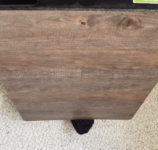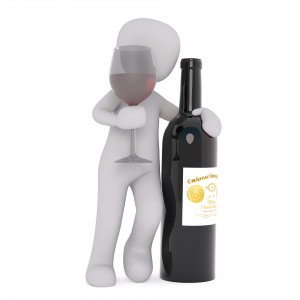How a Broken Toe Helped My Tinnitus
The Way I Hear It
Gael Hannan (The Way I Hear It) is a hard of hearing advocate that understands both sides of the fence between the consumer and the hearing health care professional. Gael’s columns are humorous, sometimes cutting, but always constructive and to the point.
It’s not like my feet were pretty to begin with. It didn’t help when I dropped a heavy flooring sample – the thin edge – on my left foot. The toe next to the big one is now the biggest one.

Re-creation of TOE BREAKING. (Do not try this at home.)
We’ve all stubbed or bruised or broken a toe at some point. And if you’re one of the lucky few who haven’t, be grateful; the pain is far greater than you’d expect from such a small body part. It throbs when you’re not walking. When you are, each step is a lightning bolt of agony.
But there is one benefit to this stupid accident – it has taken my mind off my tinnitus and hyperacusis (often referred to by sufferers as “T” or “H”, or by me as tinni-cusis). One form of discomfort in a momentary exchange for another.
While scientists around the world are apparently racing to discover the Big One – a cure for tinnitus – there are a few existing therapies to help relieve the perception of tinnitus, such as masking, hearing aids and cochlear implants, Tinnitus Retraining Therapy, biofeedback, etc. I have tried several, but my T is complicated, loud, and never stops, although the sounds change throughout the day so I don’t get bored with the same combination of roar-hum-and-whoosh noises. Until I discovered the benefit of pain elsewhere in the body, only three things have given me a decent break from the head noise: sleep, wine, and focusing intently on something else such as good conversation, a good show on Netflix, or a good sleep. Also, wine.

Clearly, re-focusing the brain is the #1 Best Solution, and moaning over a broken toe falls into that category.
Another benefit of toe-over-tinnitus is that people tend to be more sympathetic to something they understand.
“Hi Gael, how are you doing?”
“Well, my tinnitus is pretty bad today.”
“Oh dear.” (They look a bit concerned and then change the subject.)
OR
“Hey Gael, how’s it going?”
“Well, I broke my toe and it’s pretty sore.”
“OMG! That happened to ME and it hurts like HELL! You poor thing.”
When you have tinnitus, you look for relief and comfort wherever you can. While I wouldn’t recommend the broken toe trick, I do suggest keeping your mind engaged with anything not related to your T and H.
Oh, excuse me, please, I have to get another ice pack for my foot. In the meantime, I’m always open to good suggestions for Tinnitus Avoidance.

